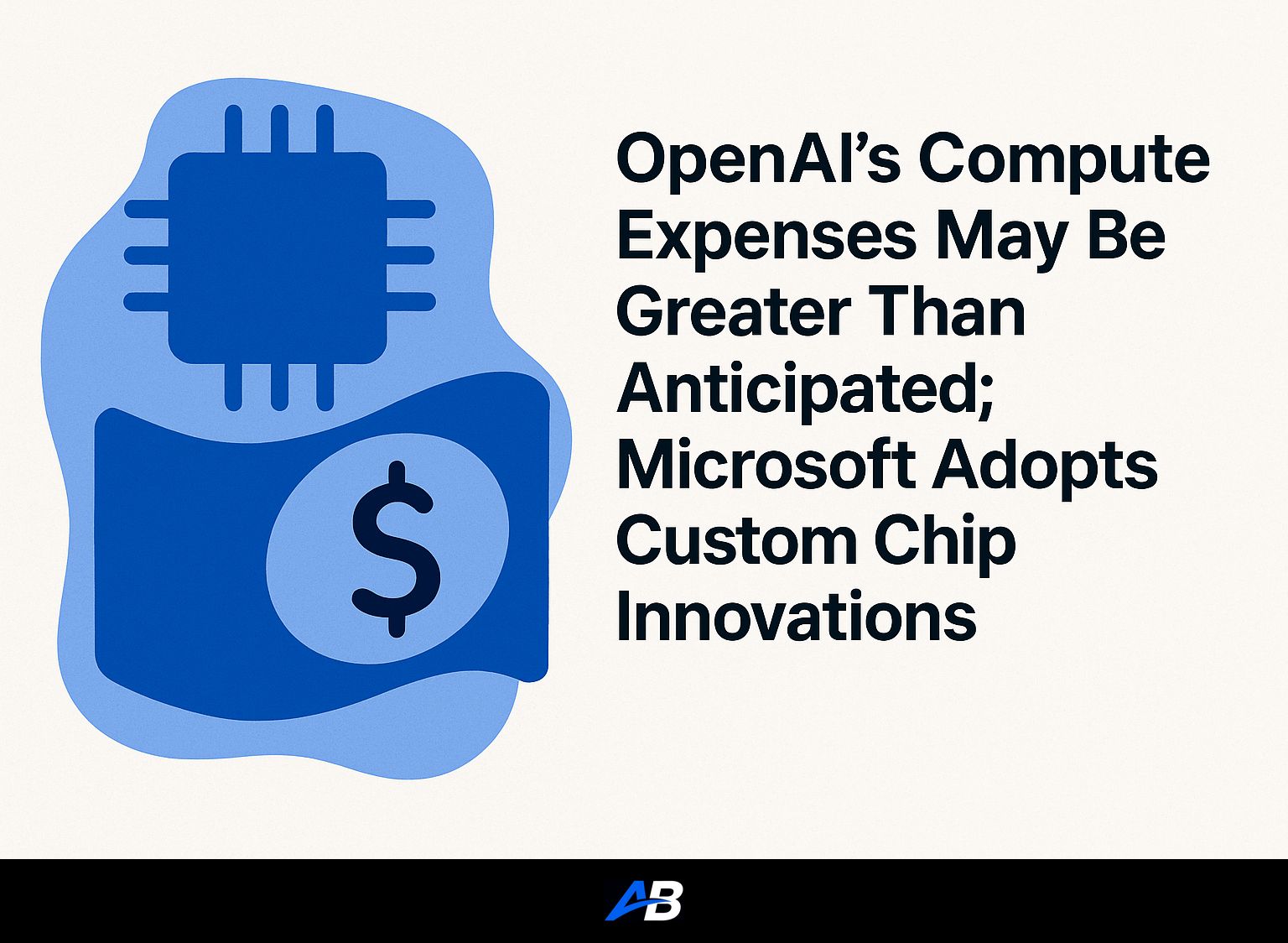OpenAI has significantly revised its projected compute expenses, indicating they may exceed prior estimates by a wide margin. Simultaneously, Microsoft is embracing OpenAI’s advancements in custom chip technology to fuel its own in-house developments.
Contents
Short Summary:
- OpenAI anticipates its compute costs could rise to $115 billion by 2029, significantly higher than previous forecasts.
- Microsoft is leveraging OpenAI’s custom chip innovations to bolster its own chip development efforts.
- Amidst intense competition, companies are struggling with the profitability of their AI investments, prompting strategic shifts.
In a notable shift within the artificial intelligence landscape, OpenAI is now projecting its compute expenses might escalate to a staggering $115 billion by 2029, representing a substantial increase from their earlier forecasts. The driving force behind this revised outlook is an increasing dependency on expensive compute resources, necessary for the rigorous demands of training and inference operations associated with large-scale AI models.
“In 2024 alone, OpenAI has spent approximately $9 billion and expects to incur losses around $5 billion, which will escalate as operational costs rise,” according to internal reports revealed by Fortune. These figures highlight a troubling trend in the AI industry, suggesting that even the leading AI providers are grappling with unsustainable business models.
OpenAI’s Financial Strain
OpenAI’s financial trajectory underscores the challenges across the sector. Internal evaluations suggest that their reliance on third-party cloud services has been detrimental to their bottom line, with operational expenditure on compute approaching 75% of their revenue. This means a substantial chunk of revenue is redirected into funding their cloud provider’s infrastructures rather than reinvesting into their own operations.
In light of these financial pressures, OpenAI plans to take a proactive stance by investing heavily in developing its own server infrastructure and custom chips. This strategic decision is aimed at curtailing the overwhelming costs associated with third-party cloud services, similar to strategies seen in other sectors.
As noted in a recent report, OpenAI has contracted Broadcom to design custom AI accelerators projected for delivery in late 2026, which will support their large-scale AI workloads. This move is pivotal in reducing their operational overheads and establishing a self-sufficient AI architecture that can adapt to their evolving needs.
Microsoft’s Strategic Adaptations
On the other side of the AI equation, Microsoft is actively positioning itself to benefit from these developments. CEO Satya Nadella clarified the company’s strategy in a recent podcast interview, stating,
“Even if OpenAI innovates at the system level, we will have full access. We will first help OpenAI implement what they have built and then expand upon it.”
By gaining access to OpenAI’s cutting-edge custom chip technology, Microsoft is bolstering its own efforts to create proprietary chips tailored for AI workloads. The new arrangement ensures Microsoft can leverage OpenAI’s advancements, optimizing its offerings in response to increased demands.
Analysts suggest this symbiotic relationship is critical, significantly enhancing Microsoft’s competitive positioning in the increasingly crowded AI marketplace. Although Microsoft relinquished its exclusive cloud partnership, it maintained crucial IP rights, including technology access until 2032 as outlined in a revised agreement.
Industry-Wide Challenges
Both OpenAI and Microsoft are navigating a challenging waterscape filled with pressures from various competitors. Companies such as Oracle, Google, and Amazon are intensifying their own AI capacities, putting pressure on Microsoft and OpenAI to not only catch up but also innovate at an unprecedented pace.
The financial stakes couldn’t be higher, as firms grapple with the conundrum of high upfront capital needs against uncertain ROI. For instance, many AI-related companies have been sending high volumes of their revenue directly to cloud providers, reinforcing an economic model that is becoming increasingly untenable.
OpenAI’s shift to explore independent silicon solutions potentially signifies a long-term plan to optimize costs while ensuring robust performance, especially in training extensive AI models. The prediction of developing an in-house hardware architecture will aid in sidestepping reliance on costly external services.
Microsoft and the Future of AI Chips
Moving forward, Microsoft’s ongoing efforts in developing chips may necessitate further investments in partnerships and technology acquisitions. With the implementation of the Maia 100 – touted as their latest AI accelerator – the firm is at a crucial juncture where performance will determine its competitive edge.
Nadella’s mention of OpenAI’s custom chip innovations indicates Microsoft is tightening its focus on both leveraging existing partnerships while innovating internally. Amidst these corporate maneuvers, it’s evident that the need for efficiency in AI-focused hardware is at the forefront of strategic planning.
The Road Ahead
Looking towards the future, both OpenAI and Microsoft need to remain vigilant in addressing the evolving dynamics within AI and cloud computing landscapes. The quest for custom chips and optimized infrastructure will be pivotal in shaping their operational future.
As they navigate these tumultuous waters, the stakes only continue to rise. Rapid advancements in AI technologies signify that profitability and sustainability will hinge greatly on operational efficiency and capability to manage escalating costs. To further understand how you can optimize your AI content generation and blog strategy in this fast-paced environment, check out Autoblogging.ai, your partner in generating AI-optimized articles.
In conclusion, the impending landscape for AI technology promises both opportunities and challenges. OpenAI and Microsoft, at the forefront of these advancements, will likely shape the narrative of AI deployment, impacting sectors far beyond technology in the years to come.
Do you need SEO Optimized AI Articles?
Autoblogging.ai is built by SEOs, for SEOs!
Get 30 article credits!

